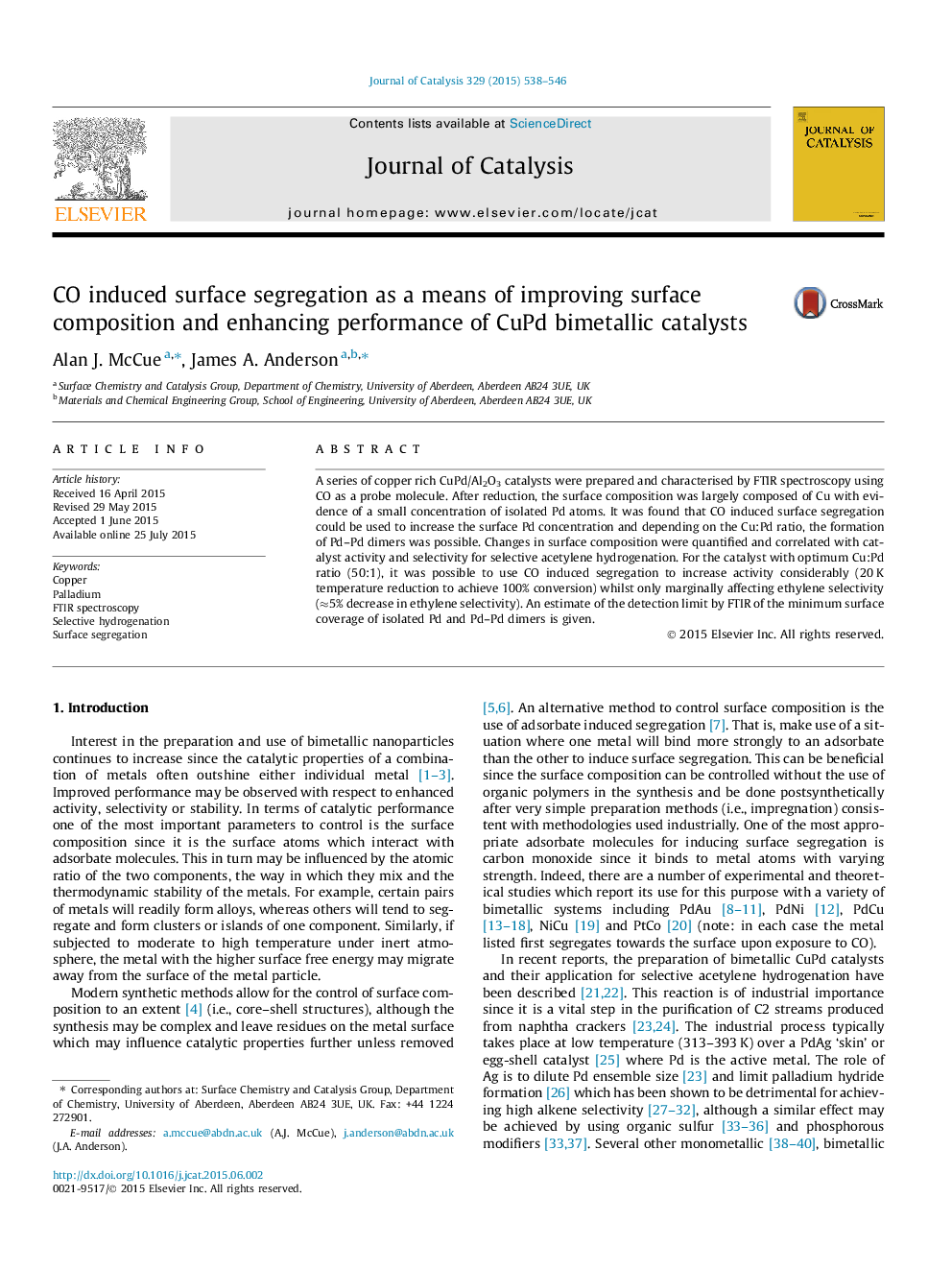| Article ID | Journal | Published Year | Pages | File Type |
|---|---|---|---|---|
| 60840 | Journal of Catalysis | 2015 | 9 Pages |
•CO induced segregation used to segregate Pd to surface of CuPd catalysts.•Infrared used to quantitatively access nature and number of Pd surface sites.•Isolated Pd atoms thought to promote H2 dissociation/spillover onto Cu.•100% acetylene conversion at only 353 K with >60% ethylene selectivity.•Sensitivity of infrared with CO as probe molecule accessed for CuPd bimetallics.
A series of copper rich CuPd/Al2O3 catalysts were prepared and characterised by FTIR spectroscopy using CO as a probe molecule. After reduction, the surface composition was largely composed of Cu with evidence of a small concentration of isolated Pd atoms. It was found that CO induced surface segregation could be used to increase the surface Pd concentration and depending on the Cu:Pd ratio, the formation of Pd–Pd dimers was possible. Changes in surface composition were quantified and correlated with catalyst activity and selectivity for selective acetylene hydrogenation. For the catalyst with optimum Cu:Pd ratio (50:1), it was possible to use CO induced segregation to increase activity considerably (20 K temperature reduction to achieve 100% conversion) whilst only marginally affecting ethylene selectivity (≈5% decrease in ethylene selectivity). An estimate of the detection limit by FTIR of the minimum surface coverage of isolated Pd and Pd–Pd dimers is given.
Graphical abstractFigure optionsDownload full-size imageDownload high-quality image (91 K)Download as PowerPoint slide
